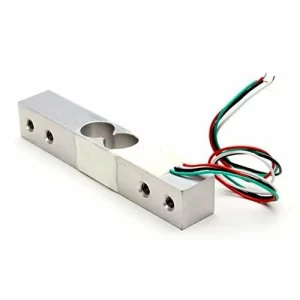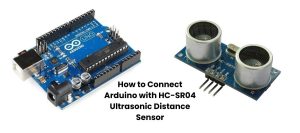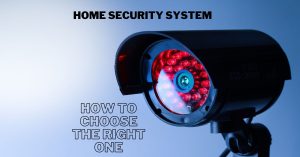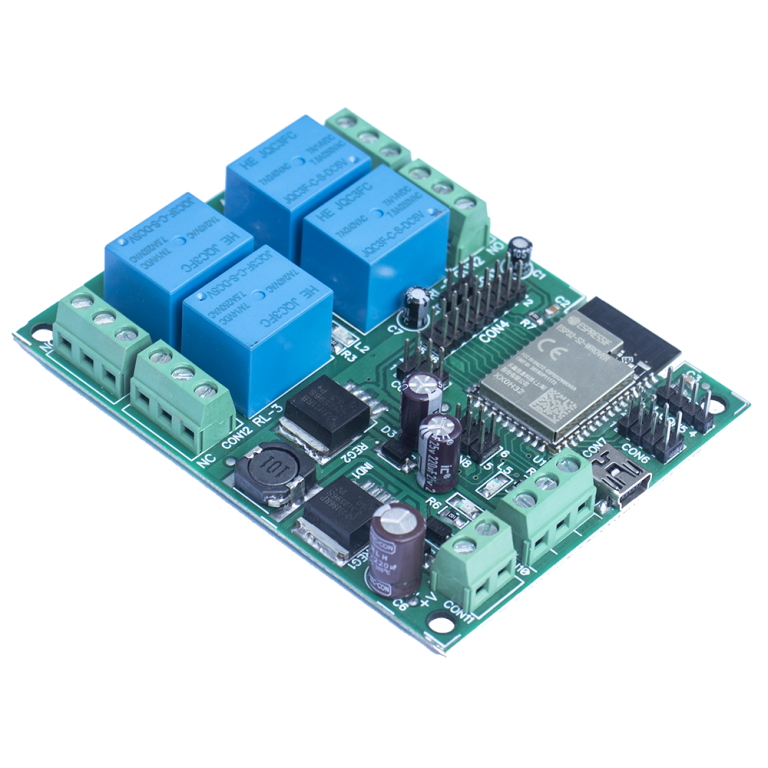Table of Contents:
- Introduction
- Pros of DIY Home Security Systems
- Cons of DIY Home Security Systems
- Cost Comparison
- Installation Process
- Compatibility
- Maintenance
- Security Risks
- Conclusion
1. Introduction
DIY home security systems comprise security devices like cameras, motion sensors, and alarms, empowering homeowners to install and monitor their security independently. This approach gains popularity due to the accessibility of smart devices easily integrating into the system. Moreover, the cost-effectiveness and flexibility it offers contribute to its growing adoption.
Many homeowners opt for DIY installation to exert greater control over their security needs. By doing so, they sidestep the expenses tied to professional installation and monitoring services. The result is a customized security setup tailored to individual preferences.
2. Exploring the Advantages of DIY Home Security Systems
DIY home security systems offer a myriad of benefits, making them an attractive option for homeowners. Let’s delve into six key aspects that underscore the advantages of opting for a DIY approach:
Cost Savings
One of the most compelling advantages of DIY home security systems is the significant cost savings they offer. In contrast to professionally installed systems, DIY setups are notably more budget-friendly. By eliminating installation and monitoring fees, homeowners on a tight budget find this option particularly advantageous.
Flexibility in Choosing Devices
DIY systems empower homeowners with the flexibility to choose devices that align with their security needs and budget. This modular approach allows them to gradually build and customize their security system over time, ensuring it meets their specific requirements and preferences.
Easy Installation
Designed with simplicity in mind, DIY home security systems boast easy installation, even for those not well-versed in technology. Wireless systems with pre-programmed devices significantly reduce installation time, enabling homeowners to set up the system independently without the need for professional assistance.
Portability
Most DIY systems are not only wireless but also portable, allowing homeowners to effortlessly relocate or reposition devices as needed. This portability is especially advantageous for renters who may need to move frequently, ensuring their security system adapts to changing living arrangements.
No Long-Term Contracts
Unlike traditional security systems, DIY options come with the added benefit of no long-term contracts and, in most cases, no monthly fees. This affords homeowners greater control over their security needs, promoting financial savings in the long run.
Remote Access
Modern DIY home security systems provide remote access through online and cellphone notifications. Homeowners can monitor and adjust their security settings from anywhere with an internet connection, ensuring constant vigilance over their property.
Thus, opting for a DIY home security system grants homeowners increased control, potential cost savings, and the ability to tailor their security setup to suit individual needs. Embrace the flexibility and modern features of DIY systems to safeguard your home effectively.
3. The Challenges of DIY Home Security Systems
Potential for Installation Errors
DIY installation poses a challenge, with a notable risk of errors during setup. These errors can compromise the effectiveness of the entire home security system.
Lack of Professional Monitoring
In contrast to professionally installed systems, DIY home security setups often lack professional monitoring. Homeowners bear the responsibility of monitoring their security and responding to alerts.
Limited Support Options
DIY systems may offer limited support, placing the onus on homeowners to maintain and troubleshoot the system independently.
Limited Security Information
Incorrect installation or setup of DIY systems can result in limited security information being delivered through the system, potentially jeopardizing home security.
Lack of Innovation
DIY products may lack advanced features and innovations found in professional security solutions, coupled with the assurance of professional installation, ensuring peace of mind in addressing security needs.
No Connection to Emergency Teams
Leading security systems provide direct access to police and medical personnel during emergencies, a feature often absent in DIY systems. Homeowners may need to take extra steps to contact emergency services.
While DIY home security systems offer cost savings and flexibility, they come with drawbacks such as potential installation errors, lack of professional monitoring, limited support, the absence of advanced features, and no direct access to emergency teams. Homeowners should weigh these factors carefully when deciding whether to opt for a DIY system. Prioritizing security is crucial, and understanding the limitations of a DIY approach is essential for making informed choices about enhancing home safety.
4. The Cost Conundrum: DIY vs. Professional Installation
Upfront Costs
When comparing DIY home security systems to professionally installed counterparts, the upfront costs are a pivotal factor. DIY systems shine here, being generally more budget-friendly as they skip the additional expense of professional installation and monitoring services.
Monthly Fees
DIY systems often stand out by avoiding ongoing monthly fees, in contrast to professionally installed systems that usually come with monthly monitoring charges.
Installation Costs
The budget-friendly installation process of DIY systems is a key advantage. Homeowners can install the system themselves, eliminating the need for professional assistance and cutting down on costs.
Maintenance Costs
DIY systems put the onus on homeowners for system maintenance and issue troubleshooting, potentially saving money compared to professionally installed systems, which come with regular maintenance and support.
Expandability
Flexibility is a hallmark of DIY systems. They can be easily expanded or upgraded, allowing homeowners to tailor their security setup according to evolving needs over time.
Support and Warranty
While DIY systems might offer limited support options, professionally installed systems provide support from the manufacturing company and the security firm responsible for the system. This support proves invaluable in the event of malfunctions or issues.
In short, DIY home security systems generally present a more cost-effective option than their professionally installed counterparts. However, they demand more effort and time for installation and maintenance. Homeowners should carefully weigh the pros and cons based on their budget, technical skills, and security requirements.
5. Unveiling the DIY Home Security Systems Installation Process
In the venture of installing a DIY home security system, a series of steps unfolds, each crucial for a seamless process. Here’s an intricate look at the six pivotal aspects of the installation journey:
Planning and Preparation
The inaugural step involves a meticulous assessment of the home’s security needs. Identifying potential entry points, such as doors and windows, and strategically placing security cameras and motion sensors, form the cornerstone of this phase.
Selecting Devices
With security needs identified, the subsequent step delves into selecting the fitting security devices. From wireless cameras to motion sensors, door and window sensors, and a control panel, the key is to ensure compatibility and alignment with the specific security requirements.
Installing the Base Station
The central nervous system of the security setup, the base station, finds its place in a central location within the home. Beyond device communication, it may also offer access through a mobile app or web portal, adding a layer of convenience.
Mounting Equipment
Once the base station is in place, the focus shifts to mounting security equipment such as cameras, motion sensors, and door/window sensors. Employing mounting brackets, screws, and hardware secures these devices to the walls or ceilings strategically.
Connecting the Devices
With equipment secured, the next step involves establishing connections with the base station. Adhering to the manufacturer’s instructions ensures a seamless pairing process, validating the functionality of the entire system.
Testing the System
The final checkpoint is an extensive system test. This includes walking through the home to activate motion sensors, testing door and window sensors through openings and closures, and scrutinizing live feeds from security cameras.
To encapsulate, the installation process of a DIY home security system necessitates meticulous planning, device selection, base station installation, equipment mounting, device connection, and a comprehensive system test. While DIY installation offers simplicity, strict adherence to manufacturer instructions is paramount to guarantee proper installation and functionality.
Implementing these steps ensures not just the security of your home but also a heightened sense of control and awareness. Your journey to a safer home begins with a well-executed DIY installation process.
6. Exploring Crucial Aspects of Device Compatibility
In the quest for an effective DIY home security system, the compatibility of devices emerges as a pivotal factor. Here, we delve into six key aspects to consider, emphasizing the importance of seamless integration and functionality.
Device Compatibility
Harmony among security devices—cameras, sensors, and alarms—is indispensable for a glitch-free system. Incompatibility may lead to malfunctions, jeopardizing the security of your home.
Smart Home Compatibility
For those integrating security systems with smart home devices like locks, thermostats, and lighting systems, choosing devices compatible with platforms such as Google Home, Amazon Alexa, or Apple HomeKit is paramount. This ensures seamless integration and remote control.
Operating System Compatibility
Certain DIY home security systems demand compatibility with specific operating systems (Windows, macOS, or iOS) for mobile app or web portal access. Opting for devices aligned with your preferred OS enhances convenience and usability.
Mobile App Compatibility
As many DIY security systems are mobile app-controlled, compatibility with your smartphone’s operating system is essential. This facilitates remote monitoring and control, necessitating devices aligned with your phone’s platform.
System Expansion
Considering future expansions of your security system, selecting devices compatible with the existing setup is crucial. This streamlines expansion and customization without the need for a complete system overhaul.
Professional Monitoring Compatibility
Opting for professional monitoring services requires device compatibility with the monitoring service’s specifications. This ensures effective monitoring and response in emergencies, enhancing the overall reliability of the system.
To sum up, device compatibility in a DIY home security system is paramount for seamless integration, optimal functioning, and maximum efficacy. Choosing devices aligned with your smart home platform, operating system, mobile app, system expansion plans, and professional monitoring services ensures a reliable and user-friendly security setup. Make informed decisions to safeguard your home effectively.
7. The Essentials of DIY Home Security System Maintenance
Maintaining a DIY home security system involves several critical aspects to guarantee its optimal functionality and longevity. Follow this comprehensive guide to keep your security system in top-notch condition:
Battery Replacement
DIY security systems often rely on batteries to power devices like cameras, sensors, and alarms. Regularly replace batteries as specified by the manufacturer to ensure peak performance and prevent malfunctions.
Software Updates
Manufacturers consistently release software updates for DIY security systems to address vulnerabilities, introduce new features, and enhance overall performance. Regularly update your system to maintain its effectiveness and security.
Device Cleaning and Maintenance
Prolong the lifespan of security devices by routinely cleaning and maintaining them. This includes cleaning camera lenses, removing dust and debris from sensors, and checking for physical damage.
System Testing
Regularly test your DIY security system to identify potential issues and ensure all devices function correctly. Simulate security events, such as triggering motion sensors or activating alarms, to verify that the system responds as expected.
Troubleshooting
If issues arise, troubleshoot the problem promptly. Consult the user manual, contact the manufacturer, or seek assistance from online forums and communities to resolve any concerns.
System Expansion
Considering expanding your security system? Ensure existing devices are maintained and compatible with new additions. This facilitates easy expansion and customization without the need to replace the entire system.
In short, maintaining a DIY home security system involves regular battery replacement, software updates, device cleaning, system testing, troubleshooting, and system expansion. Following these guidelines ensures your security system remains effective and reliable in safeguarding your home and loved ones.
8. The Hazards of DIY Home Security Systems
Vulnerability to Hacking
DIY security systems, particularly those reliant on wireless connections, face a significant threat—vulnerability to hacking. This susceptibility may grant unauthorized access to hackers and potential thieves.
Lack of Professional Monitoring
One notable drawback of DIY systems is the absence of professional monitoring. Homeowners bear the responsibility of overseeing their security and responding to alerts. This can lead to delayed or inadequate responses to potential security threats.
False Alarms
Improper installation or setup of DIY systems can result in false alarms. Beyond being a nuisance to homeowners, these false alarms may lead to fines from local authorities, disrupting the peace of mind that security systems are meant to provide.
Limited Support
DIY systems often come with limited support options for users. Homeowners find themselves responsible for system maintenance and troubleshooting, posing a challenge for those with limited technical knowledge.
Power and Internet Outages
Many DIY smart home systems may become non-functional during power or internet outages. This vulnerability can leave homes exposed during emergencies, compromising the very purpose of a security system.
Lack of Professional Installation
DIY systems lack the precision and expertise that professional installation provides. This can impact the system’s layout and design, potentially undermining its overall effectiveness.
In a nutshell, DIY home security systems present potential security risks such as vulnerability to hacking, lack of professional monitoring, false alarms, limited support, power and internet outages, and absence of professional installation. Homeowners contemplating a DIY system should carefully weigh these risks and take the necessary measures to mitigate them effectively. Remember, the choice of a security system is a crucial decision impacting the safety of your home and loved ones.
9. Conclusion
So if you are contemplating the installation of your home security system, a careful consideration of pros and cons is essential. It’s imperative to evaluate individual security needs and budget constraints.
Choosing a DIY System
If opting for a DIY system, adhere to these guidelines:
- Select devices that are compatible with each other.
- Regularly maintain the system for optimal performance.
- Implement security measures to mitigate risks such as hacking and false alarms.
Considering Professional Installation
Alternatively, professionally installed systems offer:
- Expertise and precision in installation.
- Access to advanced security features.
- Direct communication with emergency response teams.
However, be mindful of the associated costs, including upfront expenses, ongoing fees, and potential long-term contracts.
To wrap it up, the decision to install a DIY home security system should be an informed one, considering both the advantages and drawbacks. Homeowners must align their choices with their specific security needs and financial parameters.
By weighing the pros and cons outlined in this guide, readers can confidently navigate the landscape of home security, ensuring a choice that brings peace of mind and reliable protection.
You may also like:
Top 9 Home Security System Features in 2023.





















+ There are no comments
Add yours